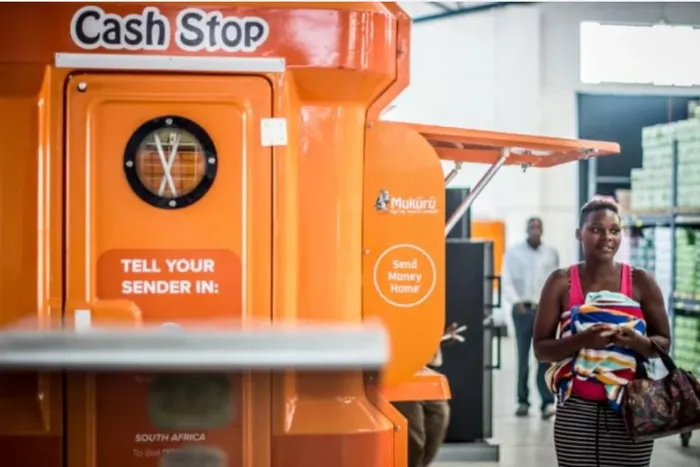The race to digitisation isn’t gender-neutral – It must be gender-intentional
DIGITISATION

When people talk about the digital revolution in Africa, it’s often in universal terms as if digitisation happens to all of us in the same way, at the same pace, and with the same effect.
Image: Supplied
By Sandy Rheeder
For those who don’t know and understand the continent, it’s easy to fall into the ‘Africa as a country’ trap. Yet, if there’s one place in the world where a one-size-fits-all approach is sure to fail, it’s Africa.
On a continent of contrasts, success comes from understanding that every country, community, and individual has unique social, cultural, and economic contexts and frameworks. Drilling down even further will expose another truth. Africa’s women are taking their rightful place, no longer limited by gender stereotypes and societal norms. All they need are the tools to enable and empower them.
So, how does this translate into supporting women on Africa’s digital transformation journey? The World Bank reports that women in low- and middle-income countries are 15% less likely than men to use mobile internet, meaning that a significant portion of this demographic doesn’t have access to the benefits of digital innovations. With the right approach, this is where opportunity lies.
When people talk about the digital revolution in Africa, it’s often in universal terms as if digitisation happens to all of us in the same way, at the same pace, and with the same effect. But anyone who’s spent time in Africa’s diverse communities, or even many of its corporate boardrooms, knows that’s not how it works, particularly when it comes to the digital banking solutions used by women.
Addressing inequalities with gender-intentional digitisation
Digitisation isn’t – and can't be – gender-neutral. Modern technology solutions need to be deliberately designed to reflect and serve the realities of both women and men. In fact, without gender-intentional digitisation, we risk reinforcing the very inequalities we’re trying to address.
This isn’t a theoretical argument. It’s something we’ve seen again and again in the work we do at Mukuru, and in the experiences of the women who use our platform across the continent. Take financial services, for example. On paper, digitisation should improve access, and by this measure, it seemingly ticks all the boxes: no need for physical infrastructure, speed and flexibility, and reduced costs. But if the person you're designing for doesn’t have a smartphone, or time to go through a verification process that calls for formal documentation, or the confidence to manage a personal PIN in a household where finances are communal, that sleek digital finance app is missing its mark.
Designing products that reflect users’ realities
Mukuru’s remittance flow data shows that while the people sending money using our platform are split relatively evenly between men and women, the recipients are overwhelmingly women. Additionally, these women are often in rural areas, with extended families, and are responsible for household decisions on food, schooling, and healthcare. Why do these insights matter? Because they enable us to meet women’s financial needs in a practical way, bringing their finances directly to them, wherever they may be. It’s about dignity and empowerment.
That’s why, for instance, when we designed our wallet product for Zimbabwe, we made it USSD-compatible. We focused on keeping it simple. You don’t need to be technically proficient or fluent in English to use it. In return, users gain access, autonomy, and trust that their money is secure.
Inclusion by (intentional) design
Too often, digital products make assumptions about their users, not taking into account the vast range of circumstances, demographics, income levels, location, and yes, gender. Especially in the communities we’re serving, if you want your product to be used by women, you need to design with women, not just for them.
And that extends to the teams building the technology, too.
It’s no coincidence that many of the most insightful ideas we’ve seen have come from young women inside our development environment at Mukuru. This stems from intentional and focused efforts to include them and to provide them with support and mentorship. For us, it's about creating spaces where these women can sharpen their skills, network, and gain confidence.
And the results have been spectacular. For instance, we’ve partnered with WeThinkCode to bring coding and tech skills to young women. Additionally, the 2024 Mukuru SheHacks hackathon brought together nearly 100 participants who developed innovative solutions to real-world challenges in remittance collection and sending. Similarly, a group of female interns turned heads in our internal hackathon with a project using voice AI to enhance digital interfaces. Why? They brought a different perspective, not because they were women per se, but because they put themselves in the shoes of users, anticipating their limitations, challenges, and specific needs.
Tech solutions for people, not users
Women in tech leadership carry a responsibility for creating the environments that allow those perspectives to thrive. I firmly believe that inclusive design starts with inclusive leadership. And inclusive leadership means genuinely caring about the people you’re building for and nurturing the same in your teams.
There’s a quiet dignity in giving someone the tools to manage their money, their time, and their future on their own terms. Gender-intentional digitisation helps us achieve this, not as part of a technical journey, but a human one. This evolves naturally when we stop building tech for ‘users’ in the abstract and start building for people, in context. When real inclusion becomes a mindset, we know we’re on the right track.

Sandy Rheeder is the chief information officer at Mukuru.
Image: Supplied
* Sandy Rheeder is the chief information officer at Mukuru.
** The views expressed do not necessarily reflect the views of IOL or Independent Media.
BUSINESS REPORT